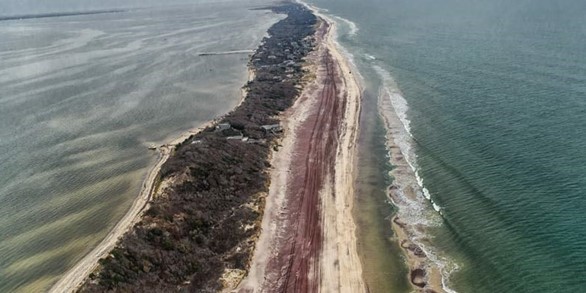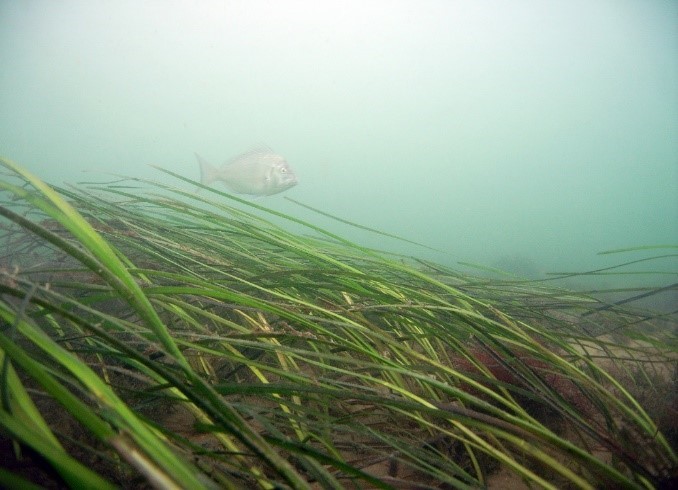Long Island Nitrogen Action Plan (LINAP) - Monthly Newsletter
The New York State Department of Environmental Conservation sent this bulletin on 07/29/2022 10:30 AM EDT |
| DEC Delivers - Information to keep you connected and informed from the NYS Department of Environmental Conservation |
| Share or view as a web page || Update preferences or unsubscribe |
Long Island Nitrogen Action Plan (LINAP) - Monthly Newsletter
|
South Shore Estuary ReserveThe South Shore Estuary Reserve Program guides the preservation, protection, and enhancement of the natural, recreational, economic, and educational resources of the estuary through partnerships with a diverse group of stakeholders including state, federal, and local organizations. Created in 1993 through the Long Island South Shore Estuary Reserve Act, the program is focused on implementing actions identified in the Reserve’s Comprehensive Management Plan. South Shore Estuary Reserve Comprehensive Management PlanThe South Shore Estuary Reserve Council is nearing completion of an update of the South Shore Estuary Reserve Comprehensive Management Plan (CMP), which is the first update since 2001. The CMP is the guiding document to be used by stakeholders for the protection, management and restoration of the valuable resources of the South Shore Estuary. The CMP update was released for public comment in the Fall of 2021 and a final CMP is expected to be released later this year. Fire Island Wastewater Management PlanThe Suffolk County Legislature in September 2021 voted and approved a $500,000 grant to develop a detailed blueprint to manage the barrier island’s wastewater. The grant provides funds to Citizens Campaign for the Environment for the first ever Fire Island Wastewater Solutions Planning and Engineering Study. This plan is a crucial initial step towards understanding the extent of the Fire Island nitrogen pollution problem and finding solutions that protect the waterways, fisheries, and communities. Fire Island plays an important role in the Long Island economy with great biodiversity and ecological value. Fire Island has only one small sewage treatment plant in the Village of Ocean Beach, therefore most residents, and numerous tourists, rely on antiquated septic and cesspool systems. These aging systems contribute to water quality impairments, harmful algal blooms, and loss of fisheries in the surrounding waterways, including the Great South Bay and Shinnecock Bay. The study will look at addressing these on-site systems and the nitrogen they release into the environment.
Photo credit: National Parks Service Town of Brookhaven SSER Local Assistance Grant ProjectThe SSER Local Assistance Grant Program provides funding to municipalities for projects helping to implement the SSER CMP. Funding for this grant program is made available from the NYS Environmental Protection Fund. The Department of State announced the completion of the Town of Brookhaven’s project to restore critical eelgrass habitat in the South Shore Estuary Reserve, which was funded with a $49,975 grant through the Long Island South Shore Estuary Reserve Local Assistance Grants Program. Eelgrass is a type of underwater marine plant found throughout the Northeast Atlantic coast and is the most abundant seagrass species found in the SSER. Eelgrass provides shelter for finfish and shellfish to live, reproduce, grow, and hide from predators as well as many other ecosystem services The Town of Brookhaven worked with students from Stony Brook University and partnered with experts from Cornell Cooperative Extension of Suffolk County to increase eelgrass habitat by planting 12,500 eelgrass shoots thus increasing the amount of this vital species in Bellport and Moriches Bay. The efforts by the Town of Brookhaven are a continuation of their work to restore and protect critical habitat in the SSER and the project is a model for bringing together municipal, academic and not-for-profit partners to undertake future seagrass restoration in the SSER. Eelgrass in the SSER has seen more than a 50 percent decline from roughly 20,000 acres in 2002 to about 10,000 acres in 2018. Several factors have led to this decline including increasing water temperatures, declining water quality, coastal development, recreational activities and disease. Excess nitrogen in coastal waters causes harmful algal blooms that blocks sunlight needed by eelgrass to survive. Through LINAP, efforts to reduce nitrogen entering the SSER will improve conditions for eelgrass survival helping with future management, protection, and restoration of eelgrass in the SSER. To learn more about eelgrass check out the “Eelgrass in the South Shore Estuary Reserve” story map.
Photo Credit: Cornell Cooperative Extension of Suffolk County Marine Program. Community Science LI 2022 Webinar SeriesCommunity Science LI is a new monthly educational webinar series that highlights various community science opportunities around Long Island, and the importance of those projects in supporting local wildlife conservation efforts. The series will run until November 2022, covering projects such as sharks, oysters, spotted lanternfly, eelgrass, osprey & eagles, and Long Island mammals. The next webinar is on August 2nd and focuses on oysters. Community Science LI is hosted by Seatuck together with our partners in the Long Island Sound Study, NY Sea Grant, Peconic Estuary Partnership and the South Shore Estuary Reserve. To learn more and register visit: https://seatuck.org/community-science-webinars/ Nitrogen Reduction Efforts in the SSERThe reduction of nitrogen pollution in the South Shore Estuary is a significant focus of the South Shore Estuary Reserve CMP and the objective of the Long Island Nitrogen Action Plan (LINAP). Both Nassau and Suffolk Counties are addressing the impacts that wastewater from inadequate septic systems, cesspools and wastewater treatment plants are having on the South Shore Estuary and Long Island as a whole. Actions taken by both Nassau and Suffolk County continue to advance the CMP and LINAP priorities and are critical to reducing nitrogen pollution and improving overall water quality in the South Shore Estuary. Many of the on-going projects in Suffolk and Nassau Counties will help the South Shore Estuary Reserve Program meet its CMP goal to improve and maintain water quality.
To sign up for our LINAP Newsletter, visit out LINAP webpage or click here. |


